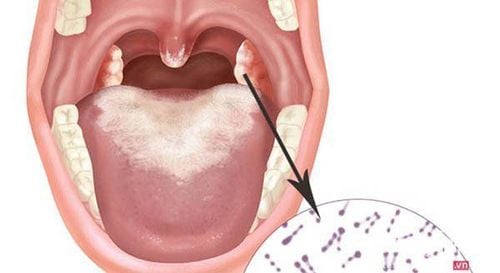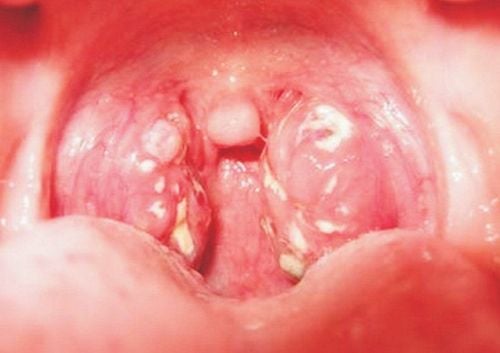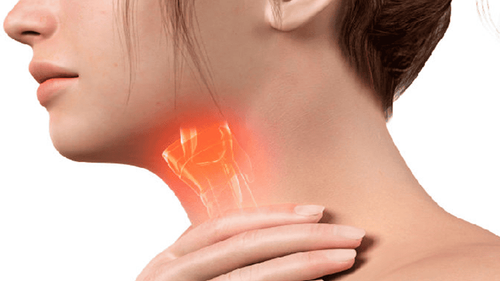This is an automatically translated article.
Laryngeal dyspnea is a common syndrome stemming from many different causes. Accordingly, laryngeal dyspnea in children, if not examined and treated promptly, can face a very high risk of death due to the lack of oxygen supply to the body. Therefore, it requires doctors to diagnose quickly, accurately and promptly handle.
1. Causes of laryngeal dyspnea
There are many causes of laryngotracheal dyspnea , some of the main causes identified for acute laryngeal dyspnea and chronic laryngeal dyspnea are as follows:
1.1 Causes of acute laryngeal dyspnoea Foreign body airway : There is airway invasion syndrome Acute laryngitis : This cause may be caused by bacteria (H.influenzae, Streptocoque, Staphylocoque) or virus, most commonly influenza virus, then virus myxovirus group. Tetanie: This cause is common in rickets with acute laryngospasm. Laryngeal diphtheria: May have a very slow onset, but if pseudomembranous obstruction is present, the patient will experience severe dyspnea. This disease can be detected by examination of the throat, laryngoscopy, and culture of white blood cells. Measles laryngitis: There are symptoms of respiratory tract inflammation, measles rash and diagnosis based on epidemiology. Post-pharyngeal abscess: Manifestations of a posterior pharyngeal abscess are severe infections and inability to swallow.

Viêm thanh quản cấp do các vi khuẩn hay virus gây ra
1.2. Causes of chronic laryngeal dyspnea Congenital stridor due to malformation of soft laryngeal cartilage. Chronic laryngeal stenosis: Chronic laryngeal stenosis is the result of trauma or narrowing due to hemangioma, congenital malformation. Laryngeal papilloma: This is a benign papilloma in the larynx, a fast-growing, recurrent tumor that causes difficulty breathing in the larynx. Diagnosis can be made by laryngoscopy.
2. Diagnosis of laryngeal dyspnea syndrome in young children
Laryngeal dyspnea is considered an emergency respiratory disease in children, according to which, to diagnose laryngeal dyspnea, doctors will usually rely on clinical symptoms.
2.1 Definite diagnosis of laryngeal dyspnea There are 3 basic and classic symptoms:
Shortness of breath during inspiration, slow breathing. There is laryngeal squeak. Contraction of respiratory muscles, especially when the sternum is concave and the chest is retracted. Besides, there are 4 common symptoms such as:
Loss of voice or hoarseness (when speaking, coughing, crying). Nod your head while breathing, tilt your head back while inhaling. Observe laryngeal cartilage protrusion during inspiration. Wrinkled face and widened nose.
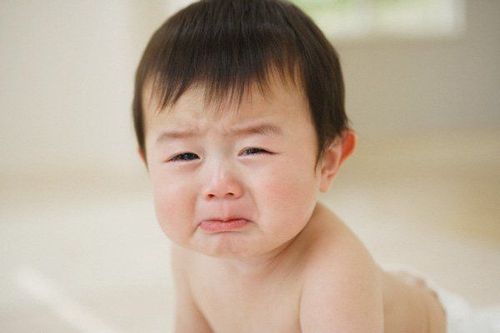
Trẻ nhăn mặt nở cánh mũi khi thanh quản bị khó thở
2.2. Diagnosing the degree of laryngeal dyspnea The assessment of laryngeal dyspnea in young children is very important, because they can help doctors predict and have an early diagnosis and treatment plan, minimizing complications. dangerous conditions affecting the health of the patient. Accordingly, there are 3 levels of laryngeal dyspnea according to 3 severity levels as follows:
Level 1:
Hoarseness and crackling sound when crying and speaking. The cough is still clear or a little hoarse. Manifestations of dyspnea are not typical, laryngeal stridor is mild or unclear, and the accessory respiratory muscles are weak. Body condition is not affected. Grade 2:
Loss of voice, unclear words. His cough was like a barking dog. The typical symptoms of laryngeal dyspnea are clear laryngeal hiss, strong respiratory muscle contractions. Children are excited, panicked, struggling, scared. Grade 3:
Loss of voice completely, crying, unable to speak out loud, relieved. Not coughing out loud or not coughing at all. Symptoms of severe shortness of breath, with manifestations of severe hypoxia. Children may be cyanotic, breathing disturbances. Systemic condition with obvious neurological effects (coma, lethargy or fatigue), cardiovascular, pale skin and sweating, etc.
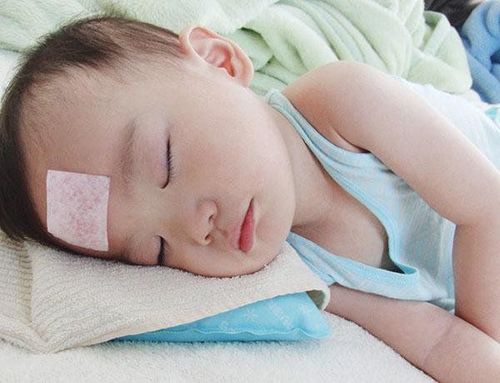
Khó thở thanh quản độ 3 gây ảnh hưởng đến toàn thân
3. Treatment of laryngeal dyspnea in children
The treatment of laryngeal dyspnea depends on the cause and degree of laryngeal dyspnea. Specifically, the treatment according to the degree of laryngeal dyspnea is as follows:
Grade 1: Outpatient treatment, dexamethasone 0.15mg/kg/single dose or Prednisone 2mg/kg for 2-3 days, need re-examination every day. Laryngeal dyspnea grade 2: Patients requiring hospitalization, Dexamethasone 0.6mg/kg IM or IV once, can be repeated after 6-12 hours if needed; Or give orally at the same dose, or nebulize Budenoside 1-2 mg/dose if there is a contraindication to systemic corticosteroids, for example, the patient is suffering from chickenpox, tuberculosis, peptic ulcer, gastrointestinal bleeding. vomiting a lot. After 2 hours, if no improvement, doctors consider nebulizing adrenaline, antibiotics if the cause of infection has not been ruled out. Laryngeal dyspnea grade 3: The patient needs emergency bed, oxygen ensures SpO2 > 95%, nebulizes adrenaline 1/1000 2-5ml or 0.4-0.5ml/kg (maximum 5ml), can repeat dose 2 after 30 minutes if shortness of breath persists and then 1-2 hours if necessary, up to 3 doses; Dexamethasone 0.6 mg/kg IM or IV once, can be repeated after 6-12 hours if necessary; antibiotic Cefotaxime or Ceftriaxone for 3-5 days. Doctors may recommend intubation when failing with adrenaline and dexamethasone, if the patient is still cyanotic, lethargic, exhausted or has episodes of apnea.
If laryngeal dyspnea syndrome in young children is not examined and treated promptly, it will lead to health dangers such as pale heart, breathing disturbances,..., even death. Therefore, when symptoms appear, parents need to go to medical centers for examination and treatment.
With many years of experience in examining and treating diseases in children, now the Pediatrics Department at Vinmec International General Hospital has become one of the major health care centers, capable of examining , screening and treatment of many specialized diseases in children. Therefore, if the child shows signs of laryngeal dyspnea, parents can take the child to Vinmec International General Hospital for examination and receive support and advice from doctors.
Please dial HOTLINE for more information or register for an appointment HERE. Download MyVinmec app to make appointments faster and to manage your bookings easily.




